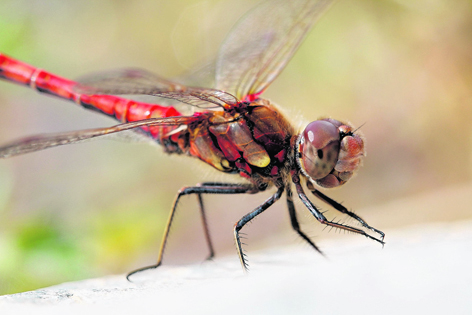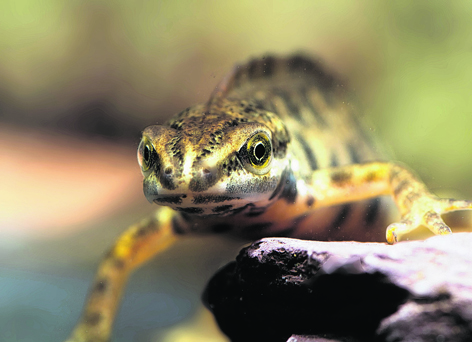Many a life-long love affair has been sparked by the simple act of staring into a jam jar filled with muddy water.
Collecting globules of frogspawn and watching them swell and separate into a wriggling flotilla of tadpoles is a childhood rite of passage – a formative experience that can start an enduring love with the natural world.
For inquisitive children, the garden pond, where the frogspawn was first plundered, can reveal a hidden world of delights. Brightly marked sticklebacks, secretive newts and shining black water beetles can all find themselves imprisoned in jam jars once small imaginations have been stirred.
The humble pond is one of our most ignored and unnoticed wild places, often failing to warrant a mention alongside those poster-boys of habitat conservation – ancient forests, peat bogs and heathland.
But the UK’s freshwater ponds are one of our most important and overlooked wildlife refuges and sadly, also one of our most abused.
Dr Jeremy Biggs, director of the Freshwater Habitats Trust (FHT), said: “Half of the UK’s ponds were lost in the last century. There are approximately half a million in Scotland, England and Wales and 80% of these are in a poor condition and getting worse.”
 Ponds are important wildlife refuges as they are used by two thirds of all freshwater species. Some 80% of all freshwater plants are found in ponds and more endangered species can be found in ponds than in other water bodies.
Ponds are important wildlife refuges as they are used by two thirds of all freshwater species. Some 80% of all freshwater plants are found in ponds and more endangered species can be found in ponds than in other water bodies.
Our back gardens may play a key role in restoring the health of the UK’s aquatic wildlife. Creating a garden pond is a simple and effective of way of bringing wildlife to your back door.
Dr Biggs said: “A garden pond provides a fantastic way to get really close to wildlife and is a great way of engaging children in nature. Most garden ponds will attract some wildlife but a good, clean pond is fulfilling a much-needed habitat requirement. If you live in the right area there is every chance you can attract some pretty unusual wildlife from great crested newts to even water voles.”
Even the most basic pond will attract frogs, dragonflies and water beetles but with a bit of care a huge array of unexpected species can appear, from grass snakes, newts, crayfish, toads and a weird and wonderful array of aquatic insects. A wildlife pond also creates the right habitat to draw in feeding bats and birds.
Early spring is as good as any time to start digging your wildlife pond and amazingly, it will start to attract the first species within a few hours of being filled.
To give your pond the perfect start the FHT advise avoiding tap water. “The crucial thing to remember is to store up clean rain water in water butts before you fill the pond,” said Dr Biggs. “Avoid tap water at all costs as it contains too much nitrogen and phosphorous which can harm wildlife.”
But don’t despair if you have a very small garden. Placing a plastic tub measuring about 50cm by 75cm in a small space can still attract frogs, damselflies and water beetles, meaning you can ditch the jam jar for good.
For more information about creating your own pond visit www.freshwaterhabitats.org.uk
